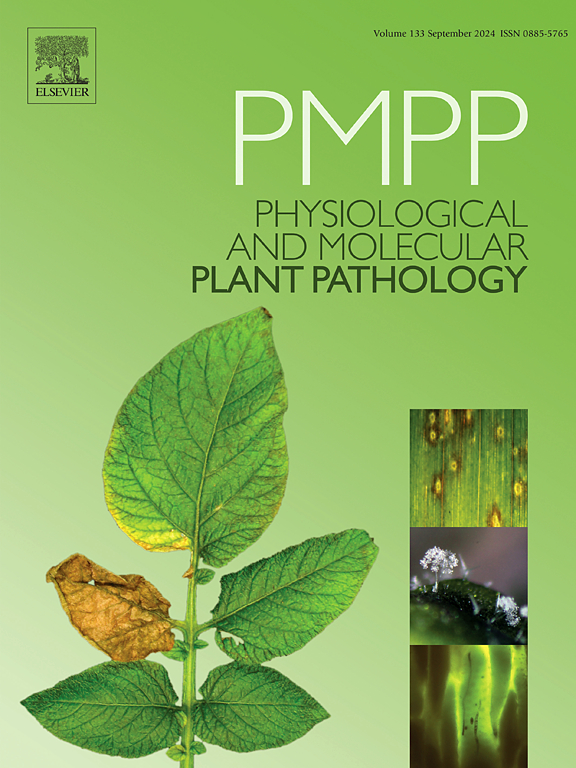棉花可持续生产的农艺和产业潜力研究进展
IF 2.8
3区 农林科学
Q2 PLANT SCIENCES
引用次数: 0
摘要
棉(Gossypium arboreum, L.)是一种原产于印度次大陆的古老二倍体棉花,由于其对生物和非生物胁迫的适应能力以及在气候变化下可持续棉花生产的潜力,具有重要的农学和工业价值。本文综述了木本植物在农艺、工业、生化和药理等方面的最新研究进展,重点介绍了木本植物作为一种抗灾和多功能作物的重要性。与广泛种植的棉花不同,该品种自然适应雨养和低投入的农业系统,对干旱、害虫和主要棉花疾病具有很强的抵抗力,适合有机和环境可持续农业。尽管与G. hirsutum等四倍体物种相比,它的纤维长度和细度受到限制,但它在吸水性棉花、手织机和粗纱上有工业应用,现在它的天然色素品种在利基市场上得到了认可。最近的育种计划旨在提高其纤维质量,同时保持耐受性。G. arboreum在缺水条件下也能保持纤维质量,增强其在易受胁迫地区的价值。其独特的生化特性,特别是其gacyp722c介导的独角麦内酯生物合成,使其区别于其他棉属植物,为植物生长调控和土壤共生提供了新的遗传学见解。植物化学上,它富含类黄酮、单宁和萜类化合物,有助于抗糖尿病、抗氧化和伤口愈合。这种药理潜力,以及它与可持续纺织应用的兼容性,扩大了它的工业范围。本文综合了遗传、农艺和植物化学的观点,认为木棉是棉花改良和气候适应型农业的重要遗传资源。本文章由计算机程序翻译,如有差异,请以英文原文为准。

Gossypium arboreum (L.): A review on its agronomic and industrial potential for sustainable cotton production
Gossypium arboreum (L.), an ancient diploid cotton species native to the Indian subcontinent, holds substantial agronomic and industrial value due to its resilience to biotic and abiotic stresses and its potential for sustainable cotton production in the face of climate change. This review synthesizes current research on the agronomic, industrial, biochemical, and pharmacological attributes of G. arboreum, emphasizing its relevance as a resilient and multifunctional crop. Unlike the widely cultivated G. hirsutum, the species is naturally adapted to rainfed and low-input agricultural systems, displaying strong resistance to drought, pests, and major cotton diseases, making it suitable for organic and environmentally sustainable farming. Despite limitations in fiber length and fineness compared to tetraploid species like G. hirsutum, it has industrial applications in absorbent cotton, handlooms, and coarse yarn, and is now gaining recognition in niche markets for its naturally pigmented varieties. Recent breeding programs have aimed to improve its fiber quality while maintaining stress tolerance. G. arboreum also maintains fiber quality under water-deficit conditions, reinforcing its value in stress-prone regions. Unique biochemical features, particularly its GaCYP722C-mediated strigolactone biosynthesis, distinguish it from other Gossypium species, offering novel genetic insights for plant growth regulation and soil symbiosis. Phytochemically, it is rich in flavonoids, tannins, and terpenoids, which contribute to antidiabetic, antioxidant, and wound-healing properties. This pharmacological potential, along with its compatibility with sustainable textile applications, expands its industrial scope. By integrating genetic, agronomic, and phytochemical perspectives, this review identifies G. arboreum as a vital genetic resource for cotton improvement and climate-resilient agriculture.
求助全文
通过发布文献求助,成功后即可免费获取论文全文。
去求助
来源期刊
CiteScore
4.30
自引率
7.40%
发文量
130
审稿时长
38 days
期刊介绍:
Physiological and Molecular Plant Pathology provides an International forum for original research papers, reviews, and commentaries on all aspects of the molecular biology, biochemistry, physiology, histology and cytology, genetics and evolution of plant-microbe interactions.
Papers on all kinds of infective pathogen, including viruses, prokaryotes, fungi, and nematodes, as well as mutualistic organisms such as Rhizobium and mycorrhyzal fungi, are acceptable as long as they have a bearing on the interaction between pathogen and plant.

 求助内容:
求助内容: 应助结果提醒方式:
应助结果提醒方式:


